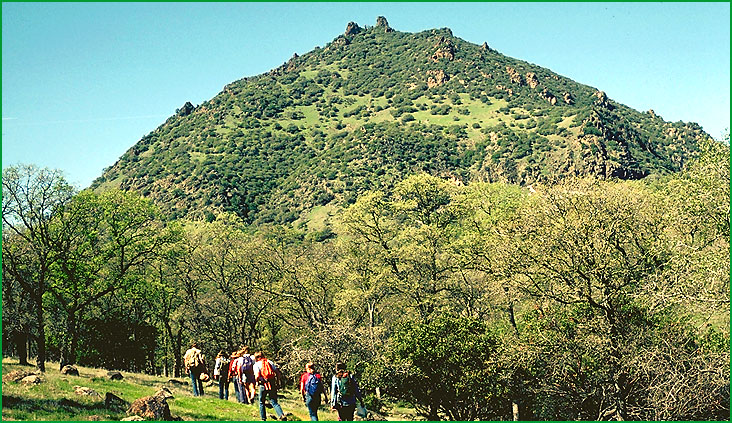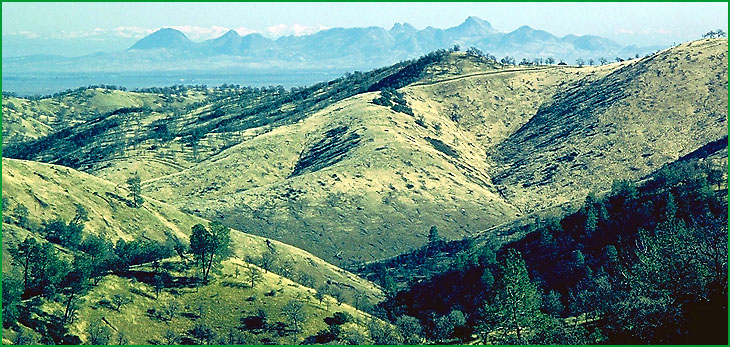 | Sutter Buttes |
Sutter Buttes Ś James R. Nelson |
Sutter Buttes in background Ś Robert Ettner |
http://www.fs.fed.us/r5/projects/ecoregions/262ae.htm
This subsection consists of a circular area of volcanic hills surrounded by the alluvial plain of the Sacramento River valley. The climate is hot and subhumid. MLRA 18d.
Lithology and Stratigraphy. The rocks of this subsection are mostly pyroclastic, and some silicic to intermediate flows.
Geomorphology. This subsection is a circular area of steep to moderately steep hills with several peaks near the center. It has a radial drainage pattern. The subsection elevation range is from about 50 to 2117 feet. Mass wasting and fluvial erosion are the main geomorphic processes.
Soils. The soils are mostly Mollic and Lithic Mollic Haploxeralfs, Lithic Xerorthents, Typic Argixerolls, and Typic Chromoxererts. The soils are well drained. Most of the soils are leached free of carbonates. Soil temperature regimes are thermic, and soil moisture regimes are xeric.
Vegetation. The most extensive natural plant communities are Blue oak series, and, on south-facing slopes and summits, Needlegrass grasslands.
Characteristic series by lifeform include:
Grasslands: California annual grassland series, Purple needlegrass series.
Forests and woodlands: Blue oak series.
Climate. Mean annual precipitation is about 15 to 18 inches. It is practically all rain. Mean annual temperature is about 58░ to 62░ F. The mean freeze-free period is about 250 to 275 days.
Surface Water. Most of the streams are dry through the summer. There are no lakes.

